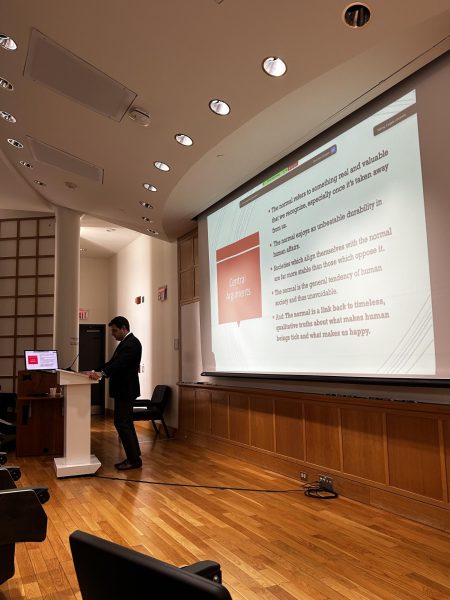Diversity Council Gets “Pulse” of Campus
By Vanessa Persico
Assistant News Editor
The first Diversity Council of 2006 met in the O’Connor Campus Center TV room Tuesday to discuss remedies for the perceived differences in Colgate’s academic climate experienced by white students and students of color.
According to Assistant Professor in Sociology Carolyn Hsu, the discrepancy in cultural perceptions emerged in the results of a survey issued three years ago as part of the ALANA Cultural Center’s strategic plan to “get the pulse” of Colgate and see if the University is truly making headway in the realm of diversity.
Assistant Professor of Psychology Landon Reid described the survey and its results to Council attendees. He said that 50 percent of the student body participated in the survey, a figure that included 75 percent of Colgate’s students of color.
The survey presented students with statements, such as “I am taken seriously as a student” and “It is difficult to find a place to study,” which students were asked to rank on a truth scale of 1-7.
Across the board, African-American students perceived the worst academic climate, followed by Latino and Asian students. Their perceptions were dramatically different from those of white students, Reid said.
“Given that this is how students experience Colgate,” Reid said, “our question – our charge, really – as the community, is to find out what we can do about this.”
Council attendees were split into groups for 20 minutes to address this question. The groups were carefully constructed to avoid social “clumping;” each included a diverse array of faculty, staff and students from differing class years.
Each group shared one recommendation about how to involve all members of the campus community in developing solutions. Suggestions included forming a student group to monitor classroom climate and advise faculty of their findings” to monitor classroom climate within each academic department, adding photos to the class rosters on Blackboard, “social norming” campaigns similar to those undertaken by Project Wellness and four-year mentoring for students of color.
Attendees then began to discuss other topics that surfaced during the brainstorming sessions.
Faculty members said that the problem with their diversity training was that it centered on broad-based, nebulous concepts instead of what works and does not work in a classroom setting. Reid mentioned that the faculty has their own personal standpoints and problems when it comes to discrimination, and that this fact is often overlooked.
The discussion turned its focus to the students present, who talked about where they were able to find camaraderie on campus. The classroom did not surface as a common location for meeting and making friends.
“I think this [Diversity Council] was especially productive,” junior Kellen Meyers said. “The suggestions are effective and they’re simple.”
Residential Education Coordinator Natalie Taylor had similar feelings.
“I think it was really good to have so many people from across campus,” she said, “but I’m a little disappointed that not every seat was filled.”




